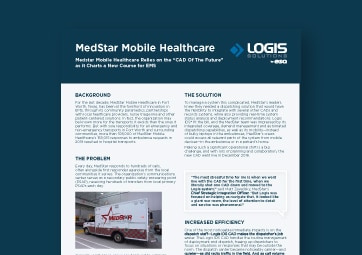Over the past few years EMS call volumes have surged to all-time highs, and despite the increase, many agencies still don’t have the budget to acquire the personnel and ambulances they need to meet the demand.
This strain not only compromises response times but leaves agencies with the difficult decision of determining which calls to prioritize and which to defer. To do so, agencies turn to their standardized dispatch response prioritization systems, and while they’re designed to determine a call’s acuity and urgency, it’s under the assumption of an immediate response.
To help alleviate agencies of this predicament and to create a smarter framework for 911 response prioritization, a team of researchers from ESO and Johns Hopkins worked together with a selection of EMS agencies to better understand the effectiveness of the current popular dispatch systems in handling time-critical illnesses.
The team reviewed 1.7 million incidents from 8 different dispatch systems, all of which occurred between January 1, 2021, and June 30, 2023. The participating systems had dispatch centers that were accredited by the International Academies of Emergency Dispatch (IAED) and used the Medical Priority Dispatch System (MPDS). MPDS included Dispatch Protocols (a numeric code representing clinical condition) and Determinant Levels (letter code representing acuity), which the research team used to evaluate time-critical intervention and hospital outcomes.
The findings
The Determinant levels of EMS responses in the study ranged from highest acuity to lowest. Critical-level acuity calls were most common, representing around 27% of calls and were closely followed by emergent and low acuity calls, which represented around a quarter of calls each. The least occurring were non-acute calls, which fell at around 2%.
The study found that overall time-critical interventions or ED diagnosis increased with increasing Determinant levels. However, a small number of lower acuity Determinant level protocols had a high proportion of time-critical interventions or outcomes.
It was also found that nearly one in ten calls were eligible for alternative disposition. This could help inform prioritization frameworks by determining which calls could be safely referred to alternative forms of care including non-emergency assistance.
Key takeaways
While this research is a great start at helping EMS agencies across the country deal with the strain of an overburdened system, it’s vital to continue to research on the subject to best optimize the process.
The first step in smarter prioritization is ensuring that both chief complaint and dispatch acuity are considered in the process. To learn other steps your organization can take to ensure your system is designed to maximize outcomes or to dive deeper into the study results, you can get your complimentary copy of the full white paper, When do minutes matter?, here.
Automate prioritization with Logis Dispatch by ESO
A powerhouse tool for automating call prioritization when demand outpaces resources, Logis Dispatch by ESO offers both Computer-Aided Dispatch (CAD) and Intelligent Decision Support (IDS). Tailored to your team’s needs and challenges, it not only eliminates the stress of determining call acuity, but it also ensures you have the bandwidth and resources available to give patients the best possible outcomes.



